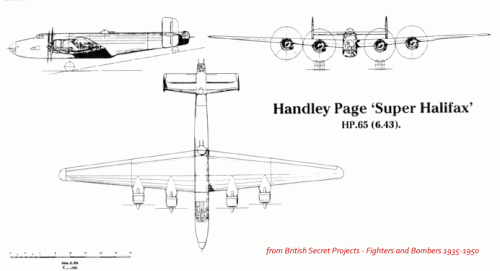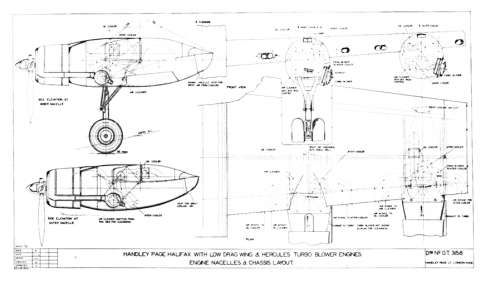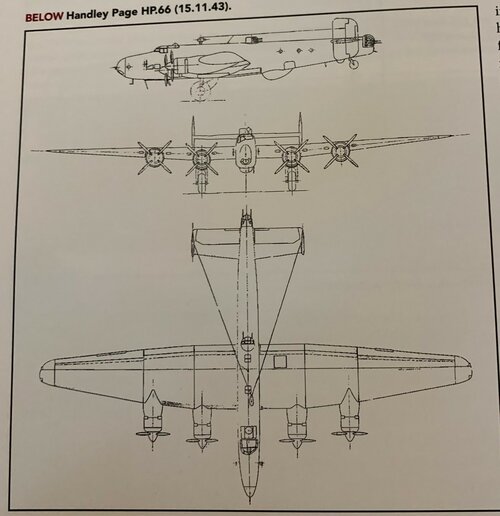- Joined
- 22 April 2012
- Messages
- 2,272
- Reaction score
- 2,036
Apparently the wings used on the Hastings were originally designed for an aircraft designated the HP.66 that was designed to B.27/43. Does anyone have any details or drawings beyond the below from the PRO Kew, AVIA 15/1925:
It was ultimately, after a number of proposed configurations, decided that the HP.65/66 would be equipped with the "ideal nose" (as installed on the Lincoln and mandated for production Windsors) with a twin .50 cal Boulton Paul Type F nose turret, a twin 20mm (Bristol B.17 as used on the Lincoln) mid-upper turret and single 20mm guns in the outer engine nacelles (similar to the Windsor configuration). One letter suggests that the mid-upper turret was itself later replaced with a barbette. One major problem with the design was that with the enlarged bomb-bay doors the H2S system could not realistically be located in the lower-mid position. Furthermore the undernose position had apparently been ruled out as unacceptable for all of the heavy bombers.
The HP.65/66 were basically just an extension of the earlier Halifax IV design that also used a long span wing, Merlin 60 series engines and a fully retracting undercarriage (fully retracting tail wheel abandoned due to design difficulties, in fact the HP.65 was to use the bomb floor designed for the Halifax IV.
Also, Google books suggests that Aeronautics Volume 15-17 may have a piece on the HP.66.
It was ultimately, after a number of proposed configurations, decided that the HP.65/66 would be equipped with the "ideal nose" (as installed on the Lincoln and mandated for production Windsors) with a twin .50 cal Boulton Paul Type F nose turret, a twin 20mm (Bristol B.17 as used on the Lincoln) mid-upper turret and single 20mm guns in the outer engine nacelles (similar to the Windsor configuration). One letter suggests that the mid-upper turret was itself later replaced with a barbette. One major problem with the design was that with the enlarged bomb-bay doors the H2S system could not realistically be located in the lower-mid position. Furthermore the undernose position had apparently been ruled out as unacceptable for all of the heavy bombers.
The HP.65/66 were basically just an extension of the earlier Halifax IV design that also used a long span wing, Merlin 60 series engines and a fully retracting undercarriage (fully retracting tail wheel abandoned due to design difficulties, in fact the HP.65 was to use the bomb floor designed for the Halifax IV.
Also, Google books suggests that Aeronautics Volume 15-17 may have a piece on the HP.66.
Last edited:



